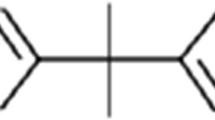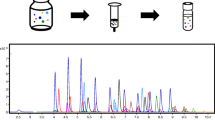Abstract
Four diets contaminated with 1.1 to 5.0 mg/kg deoxynivalenol (DON) and 0.4 to 2.4 mg/kg zearalenone (ZEA) were fed to four groups of six growing Large White pigs. Urine samples were collected after 3 to 4 days and again after 6 to 7 days on the diets. On each sampling day, half of the animals were sampled in the morning, after an 8-h fast, and the other half were sampled in the afternoon, after 7 h of ad libitum access to feed. The urinary concentrations of DON, DON-glucuronide, DON-3-sulphate, de-epoxy-DON, as well as of ZEA, ZEA-14-glucuronide, α-zearalenol and α-zearalenol-14-glucuronide, analysed using LC-MS/MS, were used to calculate urinary DON and ZEA equivalent concentrations (DONe and ZEAe). The urinary concentration of DONe (P < 0.001), but not of ZEAe (P = 0.31), was lower in the fasted than that in the fed animals. The urinary DONe/creatinine and ZEAe/creatinine ratios were highly correlated with DON and ZEA intake per kg body weight the day preceding sampling (r = 0.76 and 0.77; P < 0.001). The correlations between DON intake during the 7 h preceding urine sampling in the afternoon and urinary DONe/creatinine ratio (r = 0.88) as well as between mean ZEA intake during 3 days preceding urine sampling and urinary ZEAe/creatinine ratio (r = 0.84) were even higher, reflecting the plasma elimination half-time of several hours for DON and of more than 3 days for ZEA. ZEAe analysed in enzymatically hydrolysed urine using an ELISA kit was highly correlated with the LC-MS/MS data (r = 0.94). The urinary DONe and ZEAe to creatinine ratios, analysed in pooled urine samples of several pigs fed the same diet, can be used to estimate their exposure to DON and ZEA.






Similar content being viewed by others
References
Biehl ML, Prelusky D, Koritz G, Hartin K, Buck W, Trenholm H (1993) Biliary excretion and enterohepatic cycling of zearalenone in immature pigs. Toxicol Appl Pharm 121:152–159
Borreani G, Tabacco E, Antoniazzi S, Cavallarin L (2005) Zearalenone contamination in farm maize silage. Ital J Anim Sci 4(2):162–165
Dänicke S, Valenta H, Döll S (2004) On the toxicokinetics and the metabolism of deoxynivalenol (DON) in the pig. Arch Anim Nutr 58:169–180
Diaz-Llano G, Smith T (2006) Effects of feeding grains naturally contaminated with Fusarium mycotoxins with and without a polymeric glucomannan mycotoxin adsorbent on reproductive performance and serum chemistry of pregnant gilts. J Anim Sci 84:2361–2366
Diaz-Llano G, Smith T (2007) The effects of feeding grains naturally contaminated with Fusarium mycotoxins with and without a polymeric glucomannan adsorbent on lactation, serum chemistry, and reproductive performance after weaning of first-parity lactating sows. J Anim Sci 85:1412–1243
Döll S, Dänicke S (2011) The Fusarium toxins deoxynivalenol (DON) and zearalenone (ZON) in animal feeding. Prev Vet Med 102:132–145
EC Commission (2006) Commission recommendation on the presence of deoxynivalenol, zearalenone, ochratoxin A, T-2 and HT-2 and fumonisins in products intended for feeding. Available at:http://eur-lex.europa.eu/legal-content/EN/TXT/?uri=CELEX:32006H0576. Accessed 25 january 2016
EFSA CONTAM Panel (EFSA Panel on Contaminants in the Food Chain, 2004) Opinion of the Scientific Panel on contaminants in the food chain [CONTAM] related to Deoxynivalenol (DON) as undesirable substance in animal feed. doi:10.2903/j.efsa.2004.73
EFSA CONTAM Panel (EFSA Panel on Contaminants in the Food Chain, 2011). Scientific Opinion on the risks for public health related to the presence of zearalenone in food. EFSA Journal 2011; 9 (6):2197, 124 pp. doi:10.2903/j.efsa.2011.2197
Fruhmann P, Warth B, Hametner C, Berthiller F, Horkel E, Adam G, Sulyok M, Krska R, Fröhlich J (2012) Synthesis of deoxynivalenol-3-β-D-O-glucuronide for its use as biomarker for dietary deoxynivalenol exposure. World Mycotoxin J 5:127–132
Fruhmann P, Skrinjar P, Weber J, Mikula H, Warth B, Sulyok M, Krska R, Adam G, Rosenberg E, Hametner C, Fröhlich J (2014) Sulfation of deoxynivalenol, its acetylated derivatives, and T2-toxin. Tetrahedron 70:5260–5266
Gambacorta L, Solfrizzo M, Visconti A, Powers S, Cossalter A, Pinton P, Oswald I (2013) Validation study on urinary biomarkers of exposure for aflatoxin B1, ochratoxin A, fumonisin B1, deoxynivalenol and zearalenone in piglets. World Mycotoxin J 6:299–308
Goyarts T, Dänicke S (2006) Bioavailability of the Fusarium toxin deoxynivalenol (DON) from naturally contaminated wheat for the pig. Toxicol Lett 163:171–182
Gutzwiller A (2006) Fusarium contamination of bedding straw and pig fertility. Proc. 19th IPVS Congress, Copenhagen, Denmark, vol. 2, 626
Gutzwiller A, Gafner JL, Silacci P (2014) Urinary zearalenone measured with ELISA as a biomarker of zearalenone exposure in pigs. Mycotoxin Res 30:187–190
Häggblom P, Nordkvist E (2015) Deoxynivalenol, zearalenone, and Fusarium graminearum contamination of cereal straw; field distribution; and sampling of big bales. Mycotoxin Res 31:101–107
Malachová A, Sulyok M, Beltrán E, Berthiller F, Krska R (2014) Optimization and validation of a quantitative liquid chromatography-tandem mass spectrometric method covering 295 bacterial and fungal metabolites including all regulated mycotoxins in four model matrices. J Chrom A 1362:145–156
Meyer K, Usleber E, Märtlbauer E, Bauer J (2000) Vorkommen von Zearalenon, α- und β-Zearalenol in Gallen von Zuchtsauen in Relation zum Fruchtbarkeitsgeschehen. Berl Münch Tierärztl Wschr 113:374–379
Mikula H, Hametner C, Berthiller F, Warth B, Krska R, Adam G, Fröhlich J (2012) Fast and reproducible chemical synthesis of zearalenone-14-β, D-glucuronide. World Mycotoxin J 5:289–296
Mikula H, Weber J, Lexmüller S, Bichl G, Schwartz H, Varga E, Berthiller F, Hametner C, Krska R, Fröhlich J (2013) Simultaneous preparation of a/b-zearalenol glucosides and glucuronides. Carbohydrate Res 373:59–63
Morrow A, Walker N (1994) Effects of number and siting of single-space feeders on performance and feeding behaviour of growing pigs. J Agr Sci 122:465–470
Nagl V, Wöchtl B, Schwartz-Zimmermann HE, Hennig-Pauka I, Moll WD, Adam G, Berthiller F (2014) Metabolism of the masked mycotoxin deoxynivalenol-3-glucoside in pigs. Toxicol Lett 229:190–197
O’Connell N, Beattie V, Weatherup R (2002) Influence of feeder type on performance and behavior of weaned pigs. Livest Prod Sci 74:13–17
Prelusky D, Hartin K, Trenholm H, Miller J (1988) Pharmacokinetic fate of 14C-labeled deoxynivalenol in swine. Fund Appl Toxicol 10:276–286
Acknowledgments
We would like to thank Stephanie Schürch, Agroscope, Nyon (Switzerland), for providing the Fusarium-contaminated maize used in the present experiment. Furthermore, the Austrian Federal Ministry of Economy, Family and Youth, the Austrian National Foundation for Research, Technology and Development as well as BIOMIN Holding GmbH are acknowledged for funding the Christian Doppler Laboratory for Mycotoxin Metabolism. In addition, we are grateful to Allegra Niggeler for the help in sample collection and to Sylvia Caha for the help in sample preparation.
Author information
Authors and Affiliations
Corresponding author
Ethics declarations
Conflict of interest
None
Rights and permissions
About this article
Cite this article
Thanner, S., Czeglédi, L., Schwartz-Zimmermann, H.E. et al. Urinary deoxynivalenol (DON) and zearalenone (ZEA) as biomarkers of DON and ZEA exposure of pigs. Mycotoxin Res 32, 69–75 (2016). https://doi.org/10.1007/s12550-016-0241-2
Received:
Revised:
Accepted:
Published:
Issue Date:
DOI: https://doi.org/10.1007/s12550-016-0241-2




